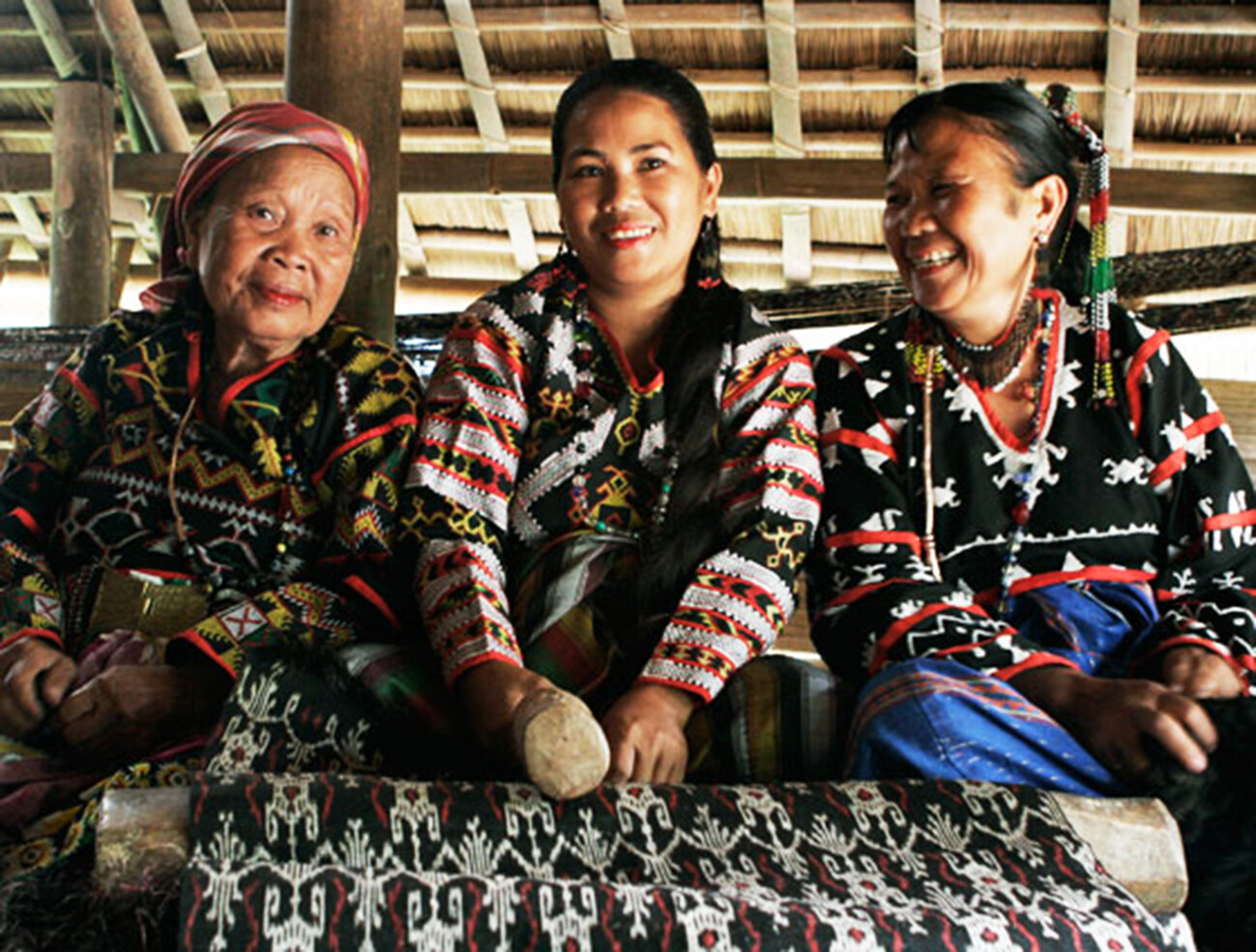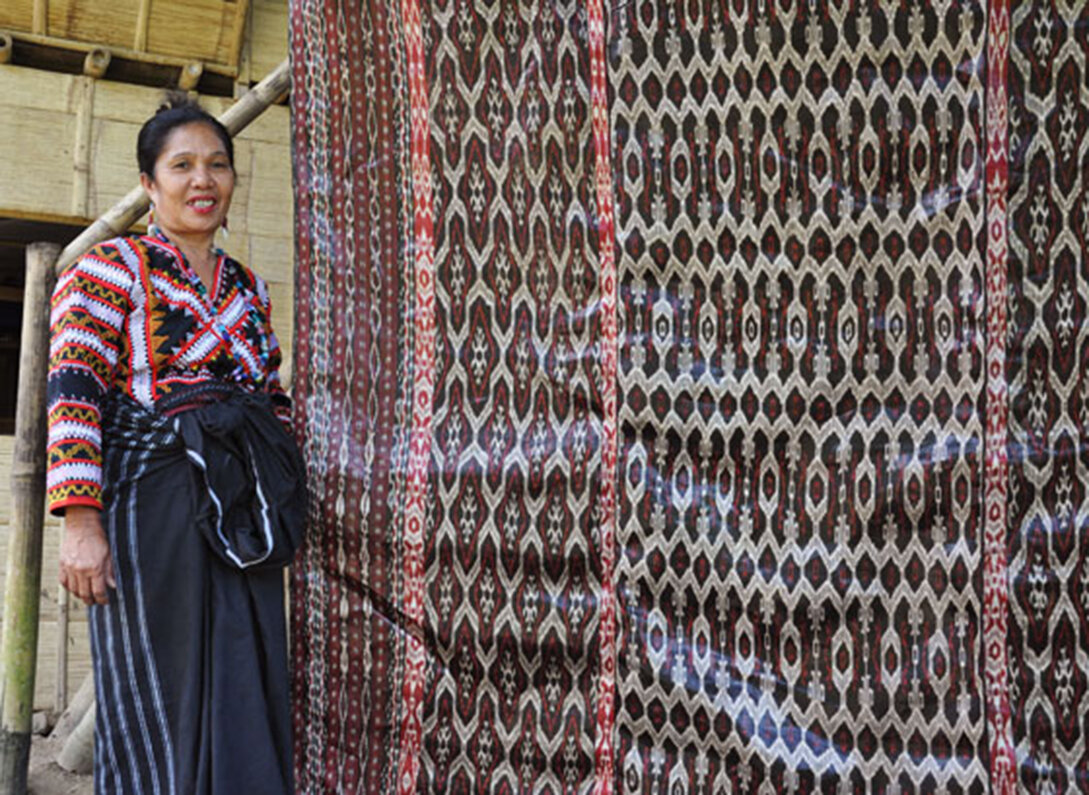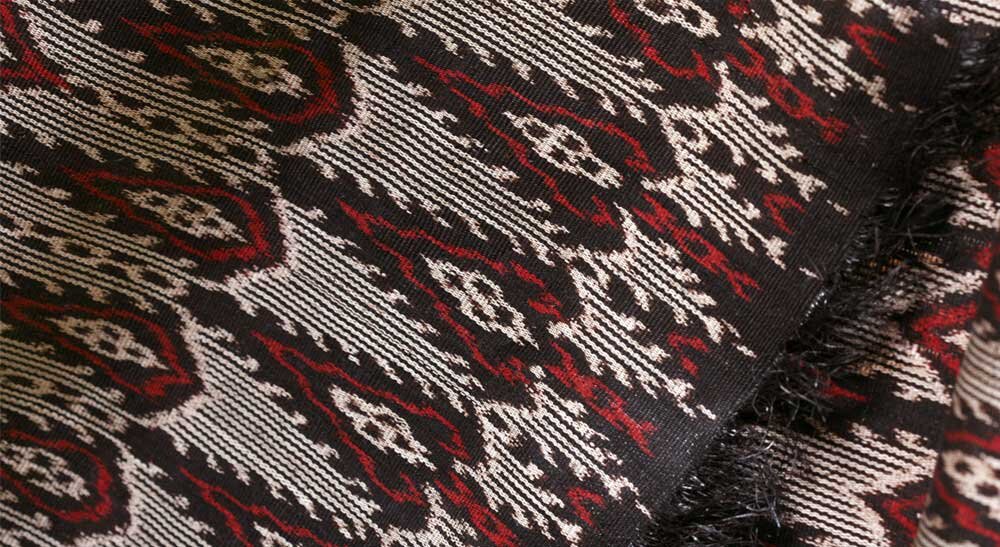T’nalak Weaving, Philippines
T’nalak is a sacred cloth woven by the T'boli people in communities around Lake Sebu, Mindanao island. Traditionally made by women of royal blood, thousands of patterns that reference folklore and stories are known to the T’boli women by memory. Fu Dalu, a spiritual guardian, guides t’nalak weaving, a process that is enriched with taboo and ritual.
T’nalak has a distinctive tri-colour scheme: White for the pattern, red for relief elements and black (or deep brown) for the background. Fibres used in weaving are harvested from the abaca tree and prepared in a process known as kedungon. Two metal blades are used to quickly remove the pulp and reveal the filaments, which are worked by hand into fine threads. During tembong, an artisan will connect individual threads end to end. Temogo, or dyeing, is done in the ikat-style, using beeswax and natural pigments. Fibres are first boiled in a black dye for several weeks. Weaving (mewel) is done on a backstrap loom (legogong) and weaving one piece of cloth can take up to a month of uninterrupted work. The final stage in the process, semaki, involves burnishing the fabric with a cowrie shell that is heated by friction. Nut oil is used to condition the fabric and add sheen.
T’nalak is used for ritual purposes, as an offering to the spirits and during festival celebrations. It is also exchanged between families for food and supplies in the T'bolis’ barter economy, which endures to this day. Many communities rely on the commercial sale of t’nalak to earn a living. For more information and to support the T’boli weavers, visit One Weave.



